HOW TELEMEDICINE IS REVOLUTIONIZING HEALTHCARE
HOME
BLOG
HOW TELEMEDICINE IS REVOLUTIONIZING HEALTHCARE
The healthcare landscape is undergoing a transformation, thanks to the rapid adoption of telemedicine. This technology-driven approach is making healthcare more accessible, efficient, and patient-centric. In this article, we’ll dive deep into how telemedicine is changing the way we experience healthcare today.
WHAT IS TELEMEDICINE?
Telemedicine refers to the use of digital communication technologies to deliver healthcare services remotely. Through video conferencing, mobile apps, and online platforms, patients can consult healthcare professionals without needing to visit a physical clinic.
THE EVOLUTION OF TELEMEDICINE
IMAGE
The concept of remote medical consultations began with telephone-based health services in the 20th century. Early forms of telemedicine were basic, offering minimal interaction between patients and doctors.
With the advent of high-speed internet, smartphones, and advanced telecommunication systems, telemedicine has grown into a sophisticated tool that provides real-time video consultations, diagnostic support, and remote monitoring.
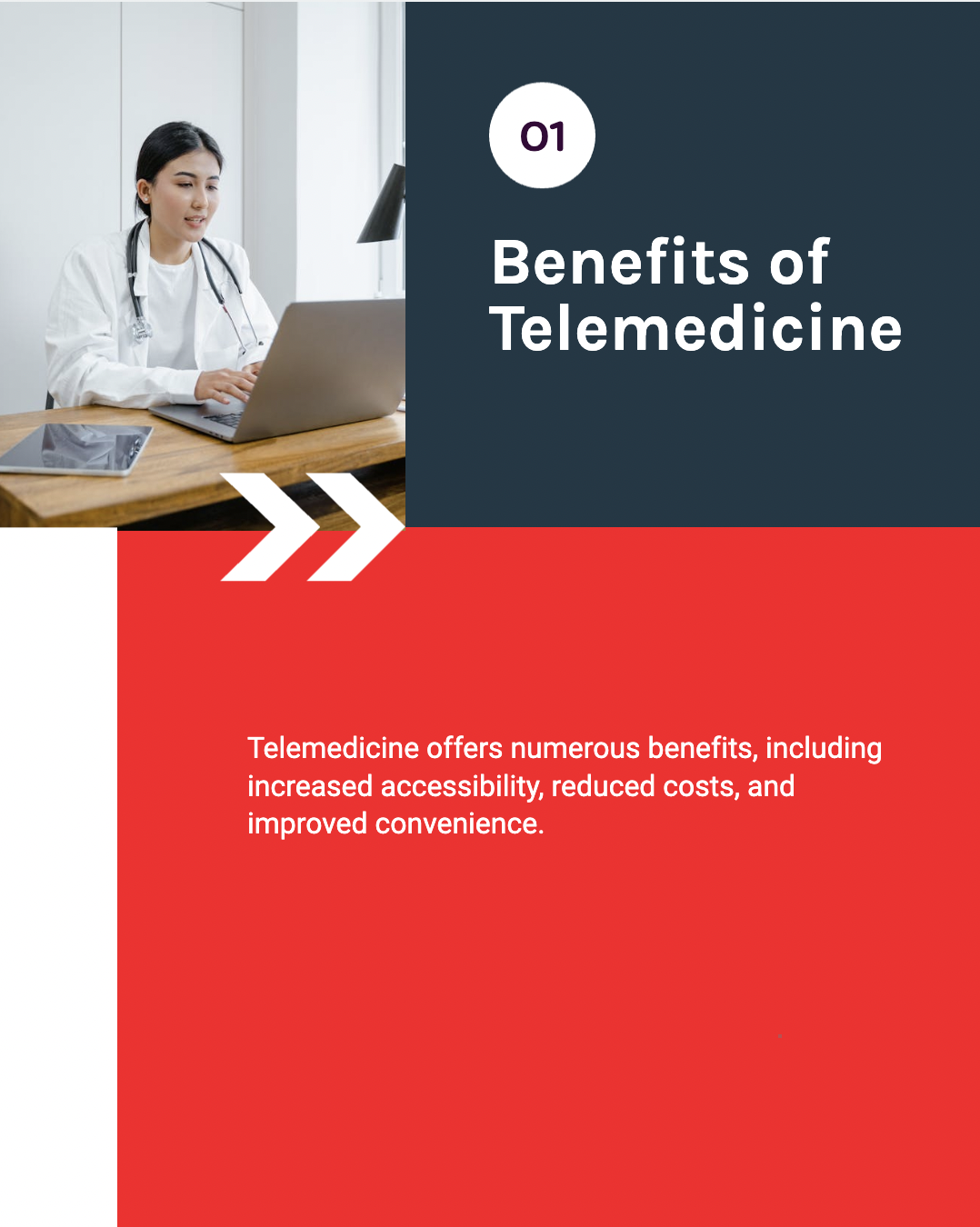
BENEFITS OF TELEMEDICINE
- Accessibility
Telemedicine eliminates geographical barriers, ensuring that patients in remote or rural areas can access top-tier medical care.
- Cost Savings
By reducing the need for travel and physical infrastructure, telemedicine lowers costs for both patients and providers.
- Convenience
Patients can schedule appointments, receive prescriptions, and get follow-up care—all from the comfort of their homes.
- Continuity of Care
Telemedicine facilitates better chronic disease management by enabling regular check-ins and monitoring without disrupting patients’ routines.

HOW TELEMEDICINE WORKS?
- Booking an Appointment
Patients use an app or online platform to book a virtual consultation with a healthcare provider.
- The Virtual Consultation
Using video conferencing tools, patients and doctors discuss symptoms, diagnose conditions, and plan treatments.
- Follow-Up and Monitoring
Patients may receive follow-up care through remote monitoring devices or additional virtual consultations.
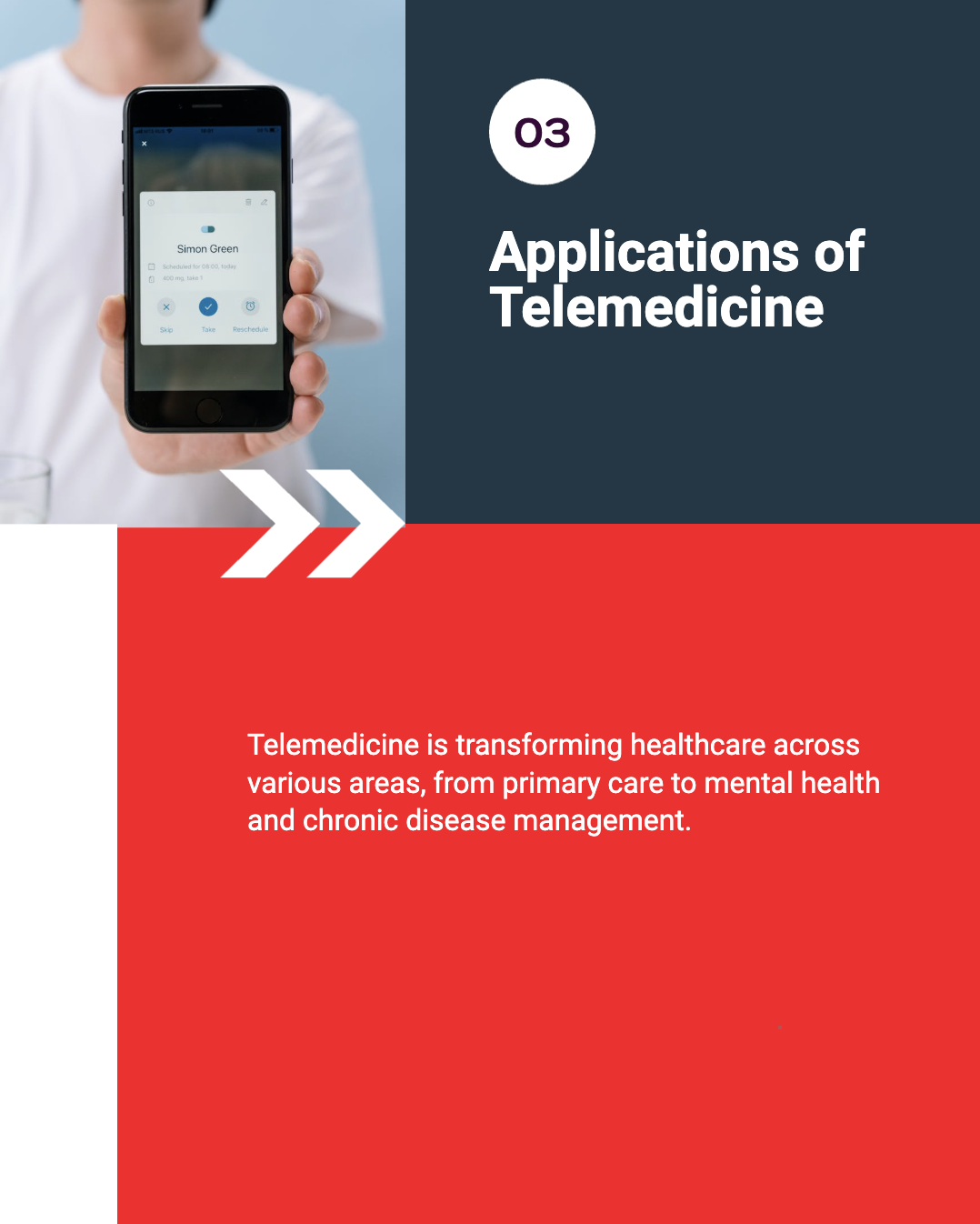
APPLICATION OF TELEMEDICINE IN HEALTHCARE
- Primary Care
Telemedicine is increasingly being used for general consultations, minor illnesses, and health advice.
- Mental Health Services
Online therapy sessions have become popular, providing accessible mental health support to those who may not seek traditional in-person services.
- Chronic Disease Management
Conditions like diabetes, hypertension, and heart disease benefit from regular remote monitoring and consultations.
- Pediatric Telemedicine
Parents can easily consult pediatricians for minor concerns without needing to visit a clinic.
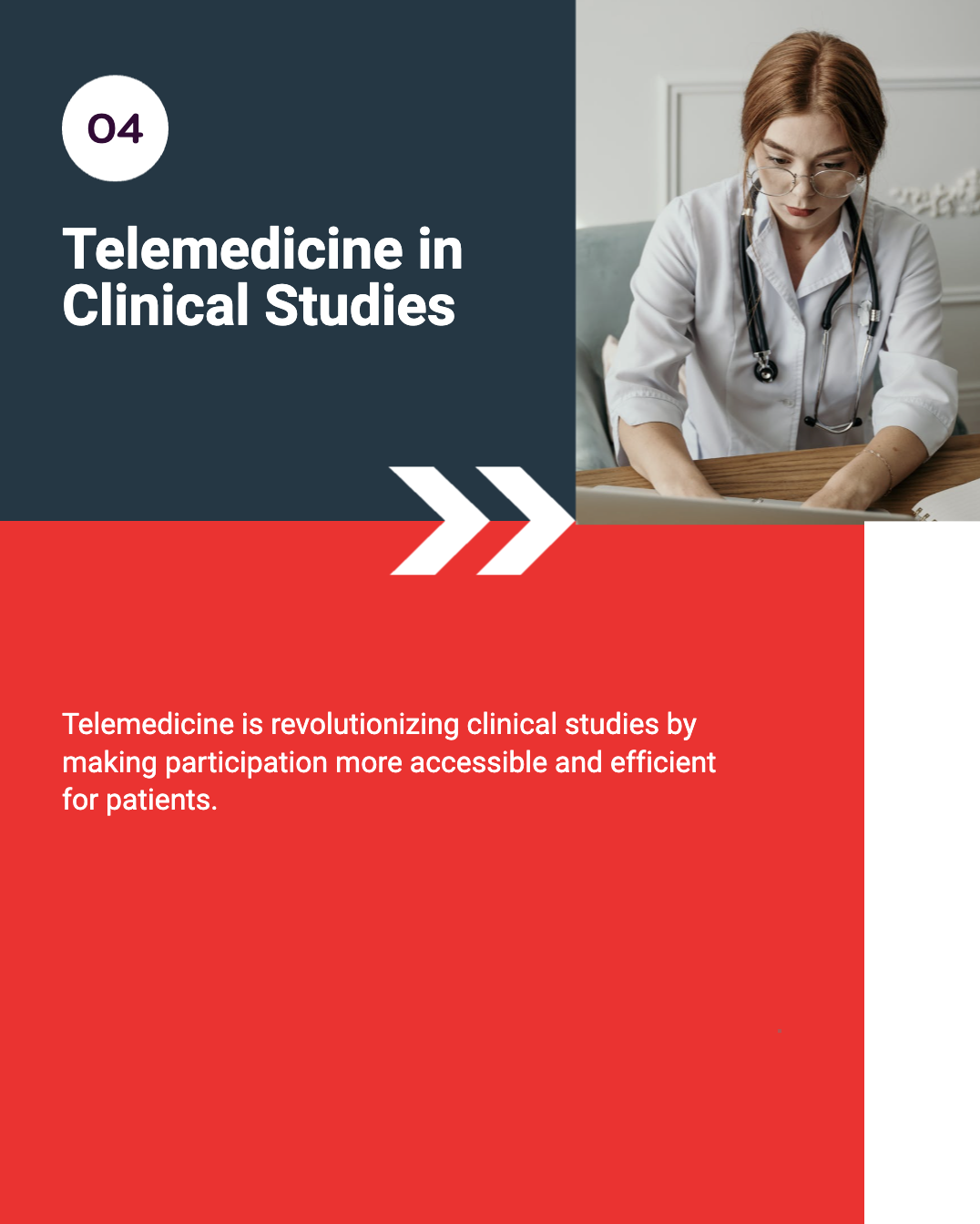
TELEMEDICINE IN CLINICAL STUDIES: EXPANDING ACCESS AND EFFICIENCY
Telemedicine is not only revolutionizing general healthcare, but it is also transforming the way clinical studies are conducted. Remote visits and digital health technologies have made it easier for patients to participate in clinical studies from the comfort of their homes, increasing accessibility and reducing the burden of travel.
How Telemedicine Enhances Clinical Studies:
- Remote Monitoring: Patients participating in clinical studies can use wearable devices and remote monitoring tools to track their health status and send real-time data to researchers, ensuring continuous observation without needing frequent in-person visits.
- Virtual Consultations: Participants can have virtual visits with study investigators, minimizing travel requirements, especially for those in remote or underserved areas. This can also make studies more diverse by including participants who might otherwise be excluded due to geographical limitations.
- Streamlined Data Collection: Through telemedicine platforms, researchers can collect health data and participant feedback digitally, improving data accuracy and timeliness.
- Increased Patient Retention: By offering remote visits and follow-up care, patients are more likely to stay engaged and complete the study, reducing drop-out rates.
Benefits for Clinical Study Participants:
- Convenience: Participants no longer need to travel long distances or take time off work to attend in-person study visits, making participation more convenient and less disruptive to daily life.
- Access to Cutting-Edge Treatments: Patients who might otherwise be excluded from studies due to geographical or logistical barriers can now easily participate and gain access to potentially life-saving treatments.
- Informed Consent: Telemedicine platforms allow for efficient communication and the provision of informed consent, ensuring that participants fully understand the study process and any associated risks.
Challenges in Telemedicine Adoption
- Limited Internet Access
In underserved areas, the lack of high-speed internet can hinder the effectiveness of telemedicine services.
- Regulatory Barriers
Telemedicine practices vary across regions, creating challenges in ensuring compliance with healthcare regulations.
- Data Security Concerns
Handling sensitive medical information requires robust cybersecurity measures to prevent data breaches.
- Technological Learning Curve
Some patients, especially the elderly, may find telemedicine platforms difficult to use.
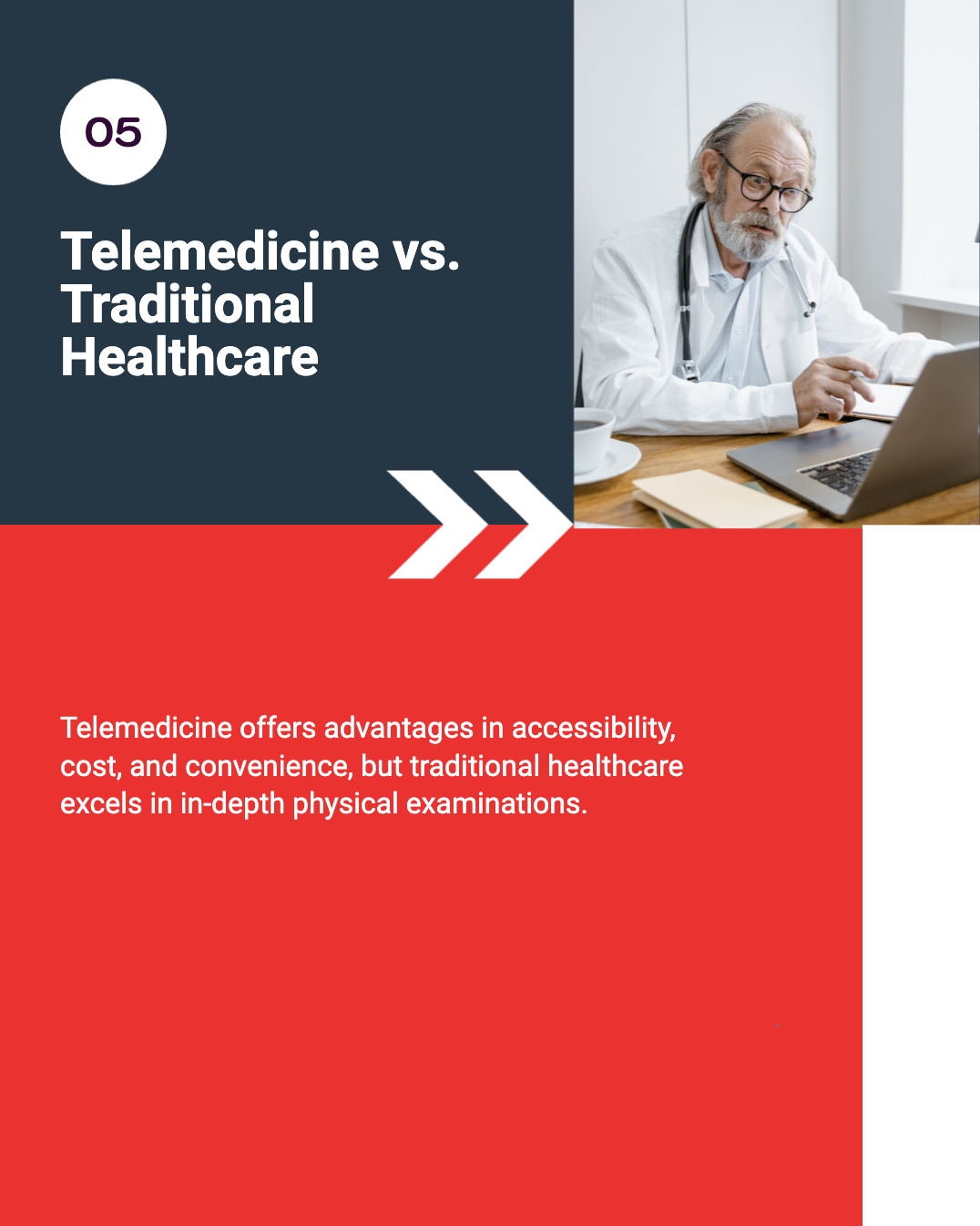
TELEMEDICINE VS. TRADITIONAL HEALTHCARE
| ASPECT |
TELEMEDICINE |
TRADITIONAL HEALTHCARE |
| ACCESSIBILITY |
Available anywhere with an internet connection |
Limited in geographic location |
| COST |
Often more affordable |
Typically higher due to infrastructure |
| CONVENIENCE |
Highly convenient |
Requires travel and waiting times |
| IN-DEPTH EXAMINATION |
Limited for physical assessments |
Allows full physical examination |
FUTURE TRENDS IN TELEMEDICINE
- Integration of AI and Machine Learning. Artificial intelligence is being used to assist in diagnosis, predict patient outcomes, and streamline administrative tasks.
- Remote Patient Monitoring Devices. Wearables and IoT-enabled devices are enhancing telemedicine by providing real-time data to healthcare providers.
- Expansion of 5G Technology. Faster internet speeds will further improve the quality of virtual consultations.
- Virtual Reality (VR) Applications. VR is being explored for applications in rehabilitation therapy and medical training.
TELEMEDICINE SUCCESS STORIES
- Case Study: Rural Clinics
In rural areas, telemedicine has bridged the gap between patients and specialists, reducing wait times and improving health outcomes.
- Case Study: Pandemic Response
During the COVID-19 pandemic, telemedicine played a critical role in providing uninterrupted healthcare services.
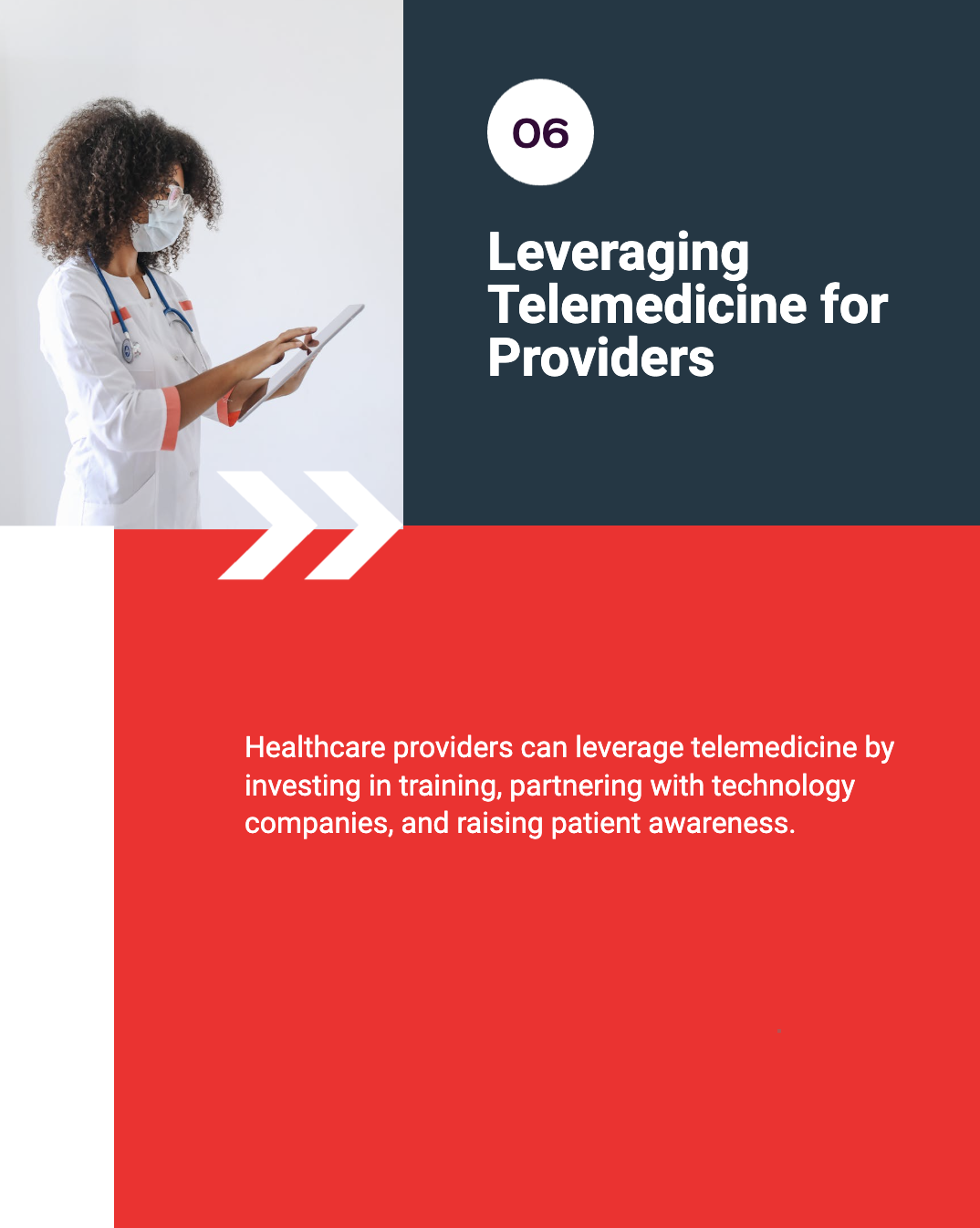
HOW HEALTHCARE PROVIDERS CAN LEVERAGE TELEMEDICINE
- Training and Education
Providers should train their staff to use telemedicine platforms effectively.
- Collaborating with Technology Partners
Healthcare institutions can partner with telemedicine technology providers to ensure seamless service delivery.
- Patient Awareness Campaigns
Educating patients on the benefits and usage of telemedicine can boost adoption rates.
Telemedicine is no longer a futuristic concept—it is an integral part of modern healthcare. By breaking down barriers of accessibility, reducing costs, and offering unparalleled convenience, telemedicine is truly revolutionizing the industry. As technology continues to evolve, telemedicine will play an even greater role in delivering efficient and patient-centric care.
FAQs
- Is telemedicine covered by insurance?
Yes, many insurance providers now cover telemedicine services, though coverage may vary by policy and region.
- Can telemedicine replace in-person doctor visits?
While telemedicine is ideal for many cases, certain conditions still require physical examinations or in-person tests.
- How secure is telemedicine?
Reputable telemedicine platforms use encryption and adhere to data privacy laws to ensure the security of patient information.
- What equipment do I need for telemedicine?
Patients typically need a smartphone, tablet, or computer with a camera, microphone, and stable internet connection.
- How do I find a telemedicine provider?
Many hospitals, clinics, and independent platforms offer telemedicine services. A quick online search can help you find options in your area.
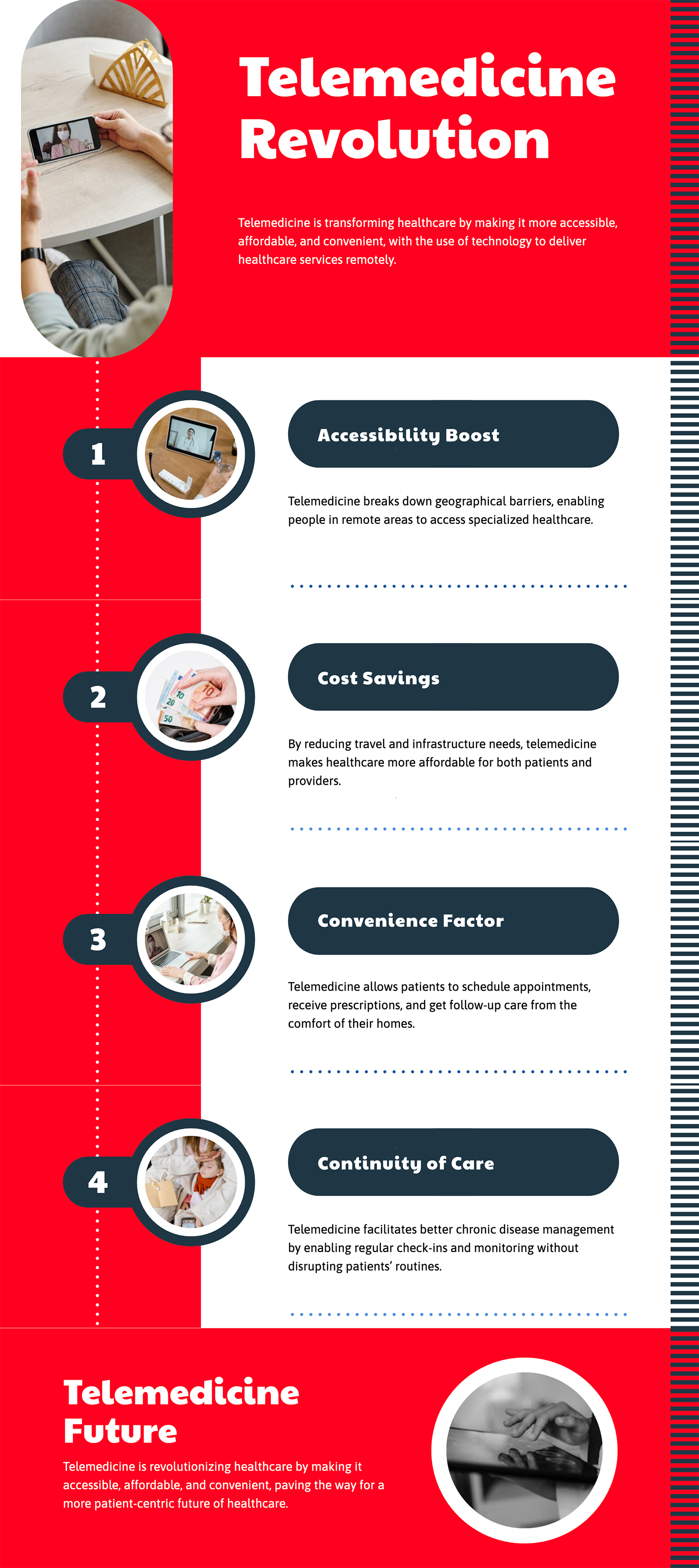 07.12.2024
07.12.2024






 07.12.2024
07.12.2024